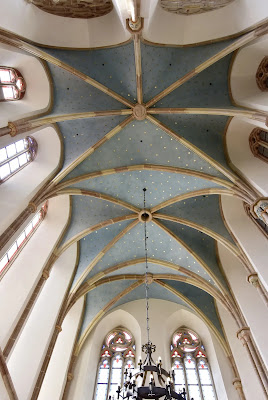The Cult of St. Thomas of Canterbury in Central Europe: St. Thomas Becket's Chapel, Racibórz Castle, Poland
‘’Will no one rid me of this turbulent priest?’’The words of King Henry II still echo ominously through the centuries and remain one of the best known in English history. The murder of Thomas Becket at the steps of his own cathedral shocked the Christian world. Henry II himself was deeply shaken. He may have not given the direct order, but neither did he constrain himself and four of his knights left Christmas court in Bur-le-Roi in Normandy, convinced they were fulfilling their Lord’s wish. The Young King was shaken, too, but also relieved that none of his own knights had been involved. The cult of a new Christian martyr spread quickly not only in England itself, but also on the Continent. Soon it reached the most distant parts of Euope. Henry II’s daughters helped to establish it in their new realms; Matilda in Saxony, Eleonora in Castile and Joan in Sicilly. Henry’s former daughter- in-law, the widow of the Young King, Marguerite of France, worshipped Saint Thomas in Hungary, at the court of Bela III, her second husband. The women undertook a diplomatic mission to clean up their father’s public image and demonstrate that the holy martyr forgave.
One hundred and seventeen years later, the cult of St. Thomas still flourished. The new castle chapel at Racibórz (Silesia, Poland), dedicated to the holy martyr, started life in 1287 and was to commemorate the agreement reached between its founder bishop Thomas II of Wrocław and Duke Henry the Rightous.
I wrote about it in my latest article for The Freelance History Writer. You can read it here. Many thanks to Susan Abernethy for the invitation:
Silesian Sainte-Chapelle: St. Thomas Becket's Chapel, Racibórz Castle, Poland



Comments
Post a Comment